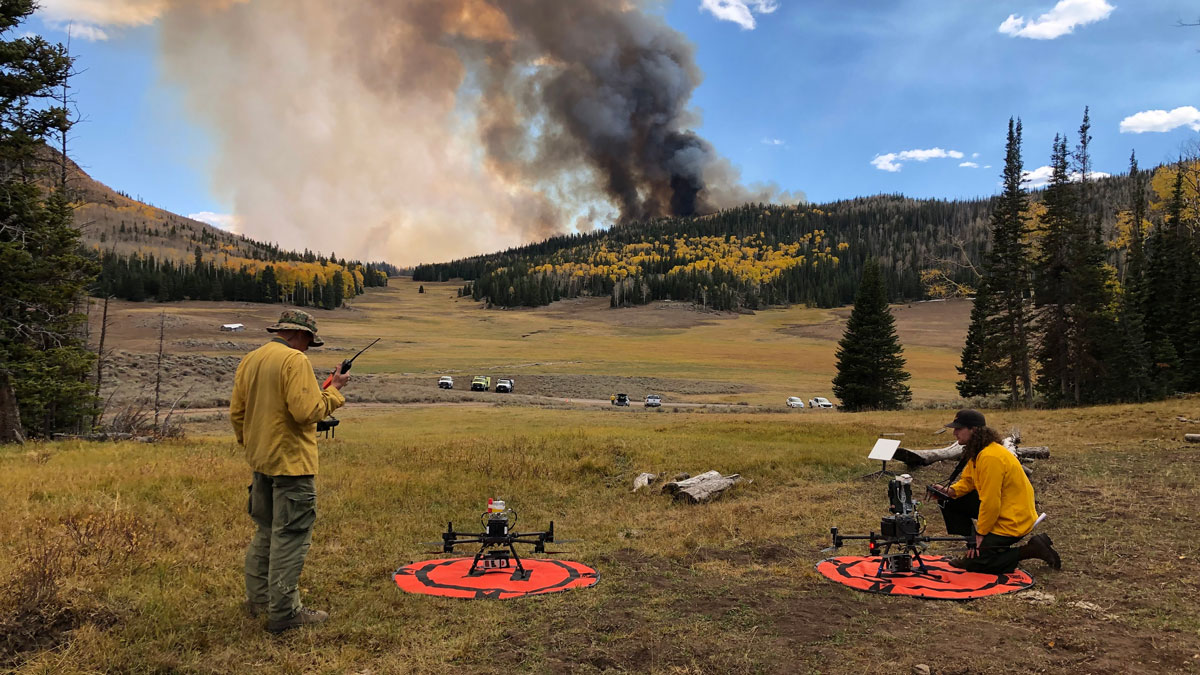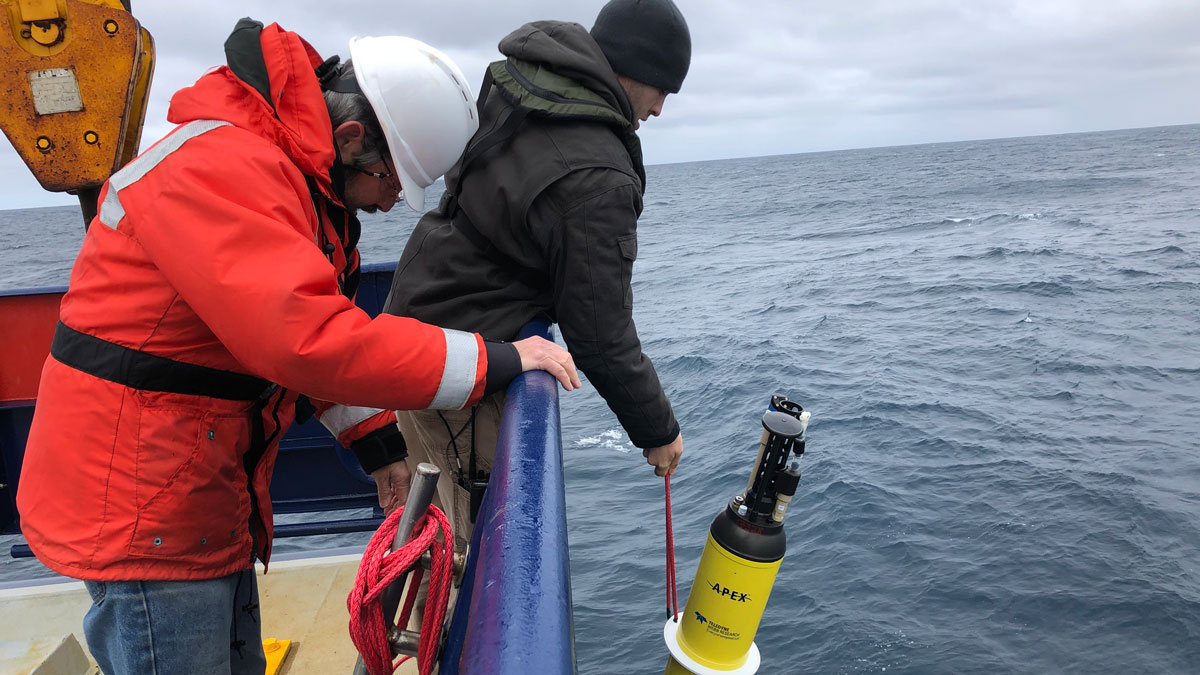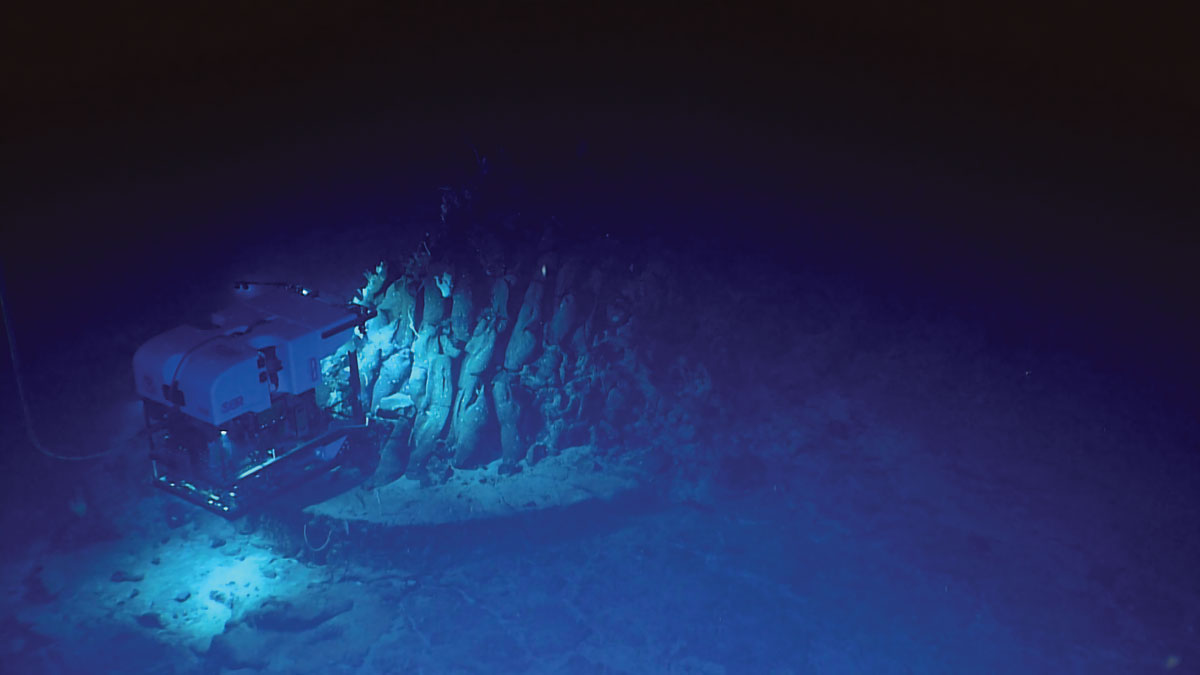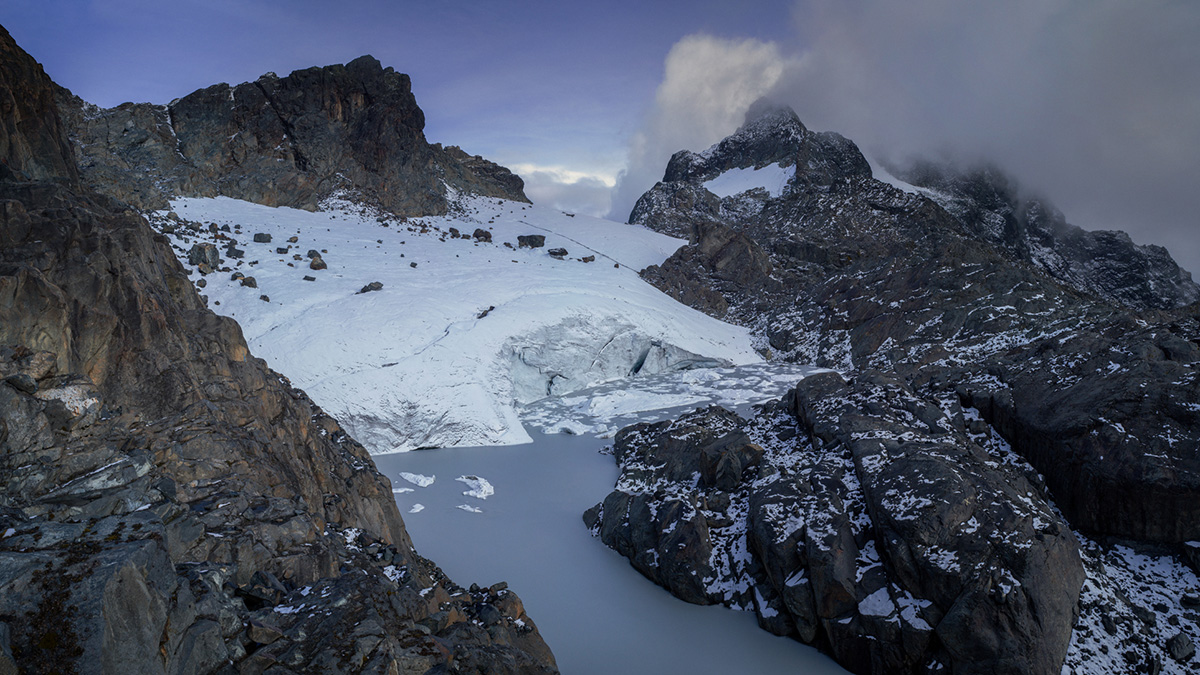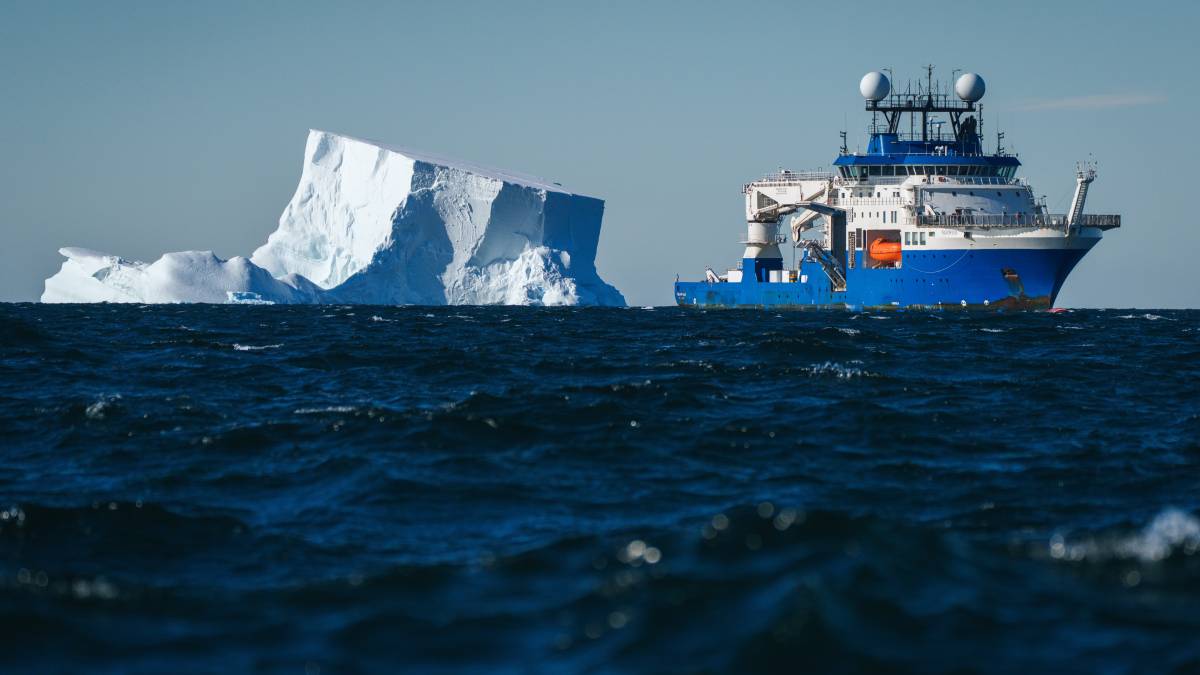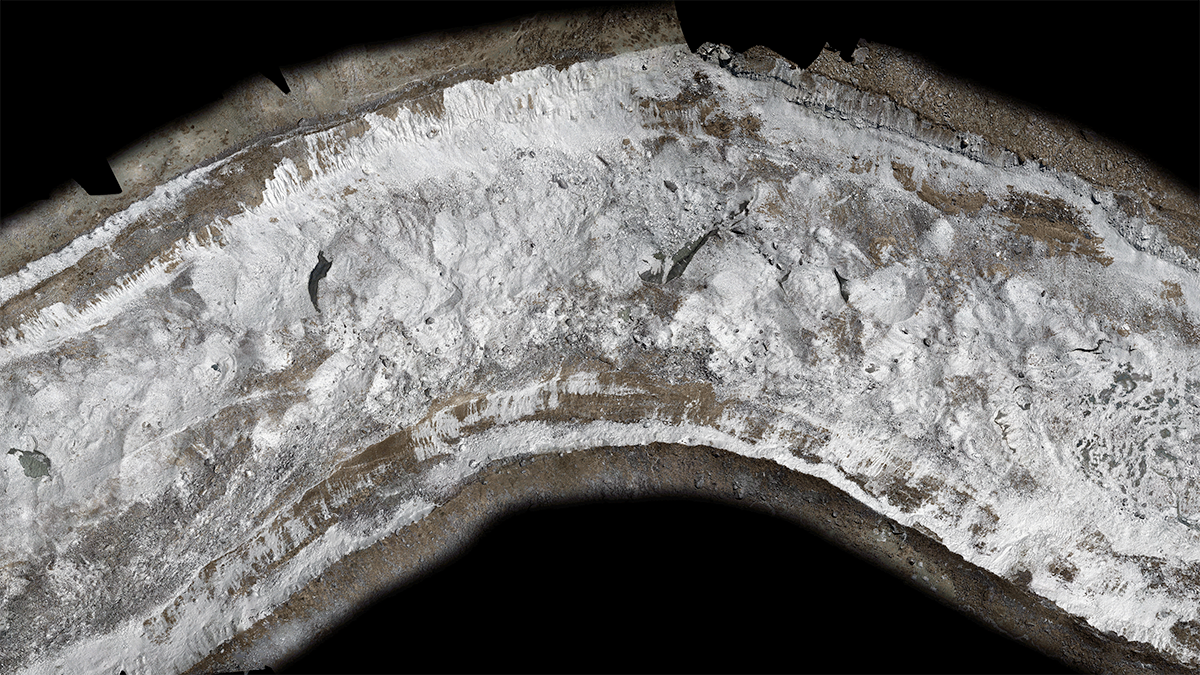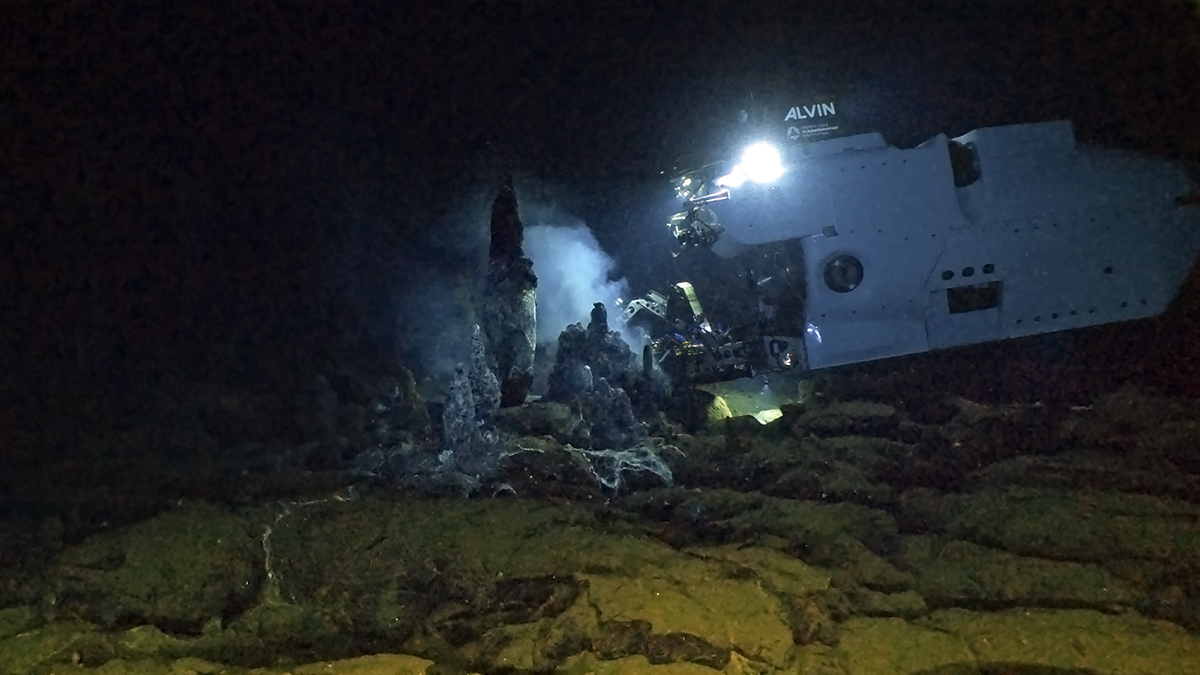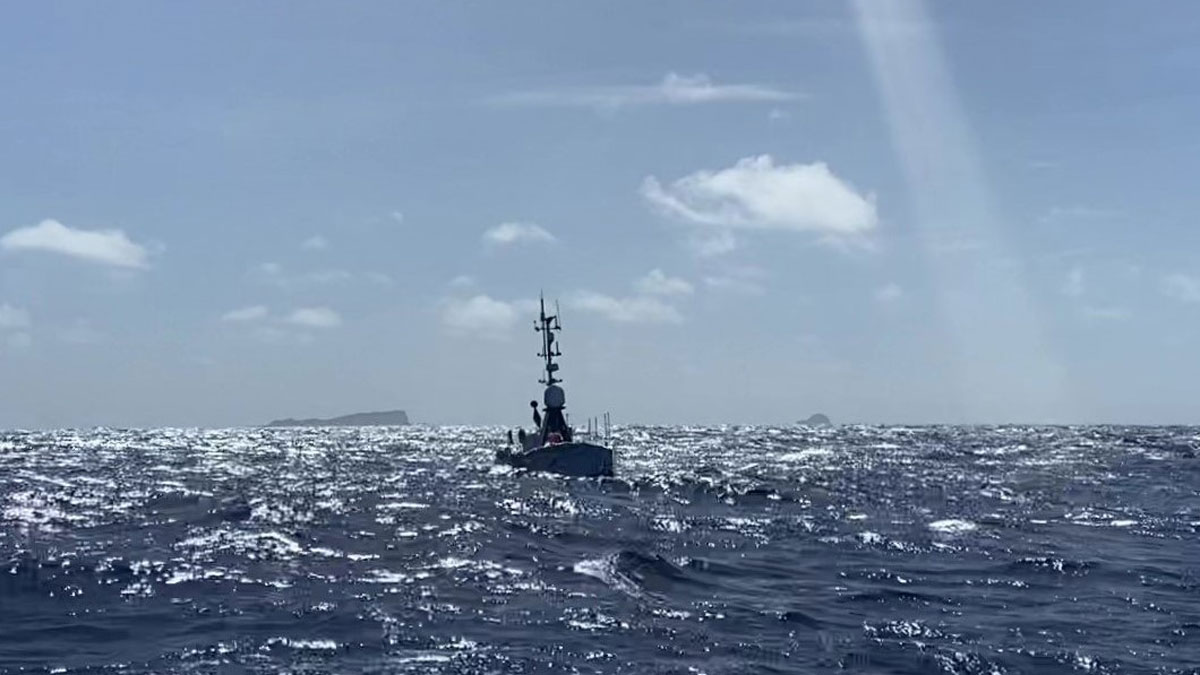Mice exposed to fungi spready by wildfires developed symptoms, exposing a potential health hazard to humans that has been understudied.
drones & ROVs
Robotic Floats Quantify Sinking Carbon in the Southern Ocean
An estimated 2.69 billion tons of carbon are exported to the deep sea every year from the Southern Ocean.
Submerged in Science
New generations of submersibles and retired stalwarts of the seas are helping scientists put the depths of the ocean at the tips of our fingers.
A New 3D Map Shows Precipitous Decline of Ugandan Glaciers
A team of dozens spent weeks in the Rwenzori Mountains capturing drone photography, GPS coordinates, and ground-penetrating radar data to document glacial retreat.
Thriving Antarctic Ecosystem Revealed by a Departing Iceberg
A quick-calving iceberg gave scientists a rare glimpse into what hides beneath Antarctic ice.
The Complex Evolution of Debris-Covered Glacier Surfaces
A first look at how the surfaces of debris-covered glaciers evolve over time from six years of drone surveys in the Nepal Himalaya.
Two ROVs to Join the U.S. Academic Research Fleet
The midsize remotely operated vehicles, supported by federal grants, will help meet growing demand for submersible research vehicles.
An Upgraded Alvin Puts New Ocean Depths Within Reach
The newly retooled submersible, which has already returned fascinating new findings from Earth’s watery depths, is opening more of the deep ocean to direct human exploration.
Exploring an Underwater Volcano from 16,000 Kilometers Away
Measurements of Hunga volcano’s crater continued for months after its 2022 eruption.

